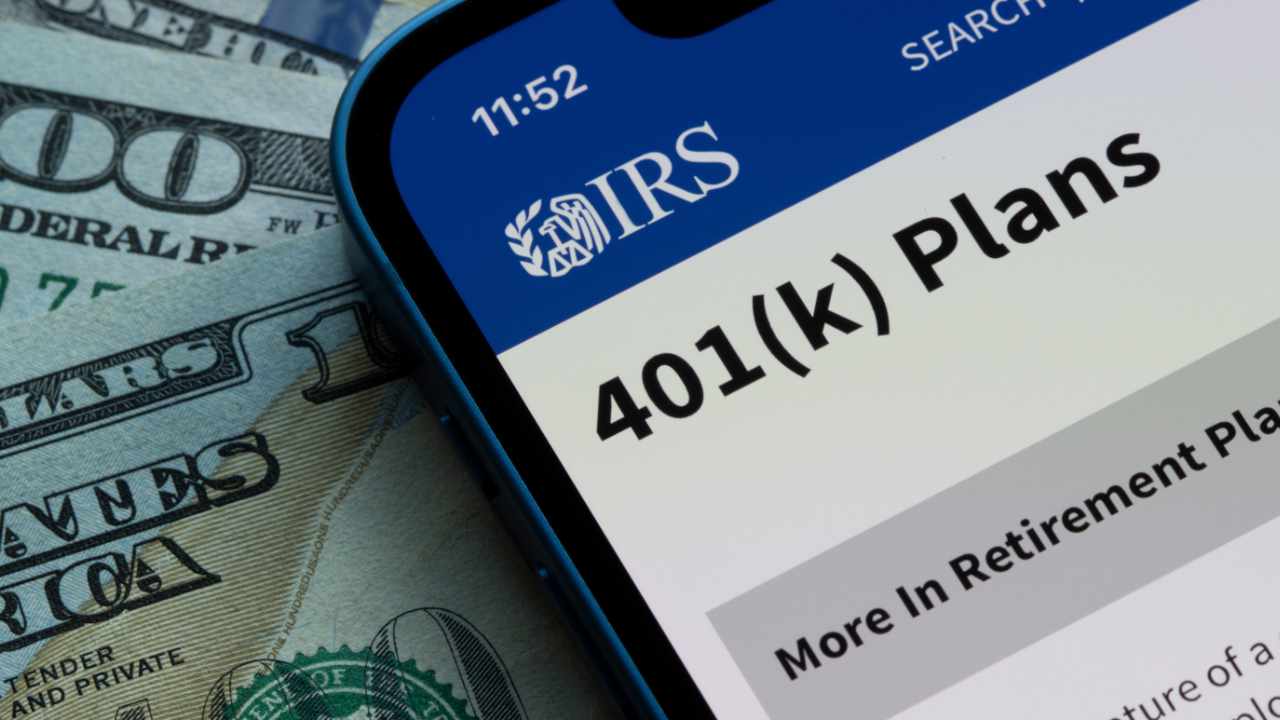
Retirement investing is undergoing a seismic shift in 2024 as cryptocurrency in 401(k) plans moves from theoretical to tangible. In the wake of major regulatory changes and executive action, American savers are now facing both unprecedented opportunities and new complexities. The policy landscape has evolved rapidly, with the Department of Labor (DOL) rescinding its 2022 guidance that discouraged crypto exposure in retirement accounts, followed by President Donald Trump’s August 2025 executive order directing the SEC to facilitate access to alternative assets like Bitcoin within defined-contribution plans. As of September 28,2025, Bitcoin (BTC) trades at $109,473, holding steady above the $100,000 threshold and underscoring crypto’s growing relevance for long-term investors.
Regulatory Shakeup: What Changed for Crypto 401(k) Regulations in 2024?
The regulatory foundation for crypto retirement investing has shifted dramatically. For years, plan fiduciaries operated under DOL guidance that effectively discouraged them from offering digital assets due to concerns about volatility and participant protection. This changed in early 2025 when the DOL adopted a neutral stance, removing explicit federal discouragement but maintaining fiduciary standards under ERISA. The watershed moment came with President Trump’s executive order in August, which directed the SEC to clear the way for alternative assets, including cryptocurrencies, within participant-directed plans (source: Reuters). Employers now have more flexibility than ever before to add crypto options, but they are not required to do so.
This policy shift coincides with broader efforts to democratize access to alternative investments like private equity and real estate within retirement accounts (source: Morgan Lewis). While these changes offer new diversification tools for savers seeking growth beyond traditional stocks and bonds, they also demand a higher level of due diligence from both investors and plan sponsors.
Major Players Respond: Fidelity’s Bitcoin Allocation and Employer Discretion
The market’s response has been swift. Major financial institutions are racing to adapt their offerings. Notably, Fidelity announced it will allow retirement investors to allocate up to 20% of their 401(k) contributions to Bitcoin, pending employer approval (source: Forbes). This move is emblematic of how quickly mainstream providers are embracing digital assets as part of a diversified portfolio strategy.
However, it’s important for participants to understand that these options are not automatically available across all employer-sponsored plans. Each employer retains discretion over which investments appear on their plan menu, a point emphasized by America’s Credit Unions (source: America’s Credit Unions). The result is a patchwork landscape where access depends on your specific plan sponsor.
Navigating Volatility: Fiduciary Duties and Investor Considerations
The DOL’s neutral stance does not diminish fiduciaries’ core obligation under ERISA, to act prudently and solely in the interest of plan participants. This means employers must rigorously evaluate the risks associated with adding cryptocurrencies like Bitcoin or Ethereum before including them as investment options (source: AJG. com). Volatility remains a defining characteristic; as of September 28,2025, Bitcoin is priced at $109,473, while Ethereum (ETH) stands at $4,004.70. Both have seen dramatic swings over short timeframes, a double-edged sword for those seeking outsized returns but wary of potential losses.
Bitcoin (BTC) Price Prediction 2026-2031: Impact of 401(k) Adoption and Market Trends
Forecasts reflect regulatory, institutional, and adoption shifts following 2025 U.S. policy changes enabling crypto in retirement plans.
| Year | Minimum Price | Average Price | Maximum Price | Year-over-Year Change (%) | Market Scenario Insights |
|---|---|---|---|---|---|
| 2026 | $82,000 | $114,000 | $150,000 | +4% | Initial 401(k) inflows support prices, but post-halving volatility and global regulatory headwinds may pressure downside. |
| 2027 | $98,000 | $128,000 | $178,000 | +12% | Broader employer adoption of crypto 401(k) options and increasing institutional participation drive price appreciation. |
| 2028 | $112,000 | $146,000 | $205,000 | +14% | Continued integration into retirement portfolios and next Bitcoin halving (expected 2028) fuel bullish sentiment. |
| 2029 | $125,000 | $162,000 | $240,000 | +11% | Increased global regulatory clarity and tech improvements (e.g., scaling, custody solutions) support higher valuations. |
| 2030 | $144,000 | $188,000 | $278,000 | +16% | Mainstream acceptance in retirement products, macroeconomic tailwinds, and growing scarcity drive new all-time highs. |
| 2031 | $132,000 | $175,000 | $320,000 | -7% | Potential market correction or regulatory tightening; long-term fundamentals remain positive but volatility persists. |
Price Prediction Summary
Bitcoin’s inclusion in U.S. 401(k) plans is expected to catalyze significant institutional adoption and help stabilize long-term demand, while regulatory clarity and technological advancements further strengthen the investment case. The forecast anticipates progressive growth with cyclical corrections, reflecting both bullish adoption scenarios and the inherent volatility of crypto markets. Investors should expect substantial price swings and adjust allocations according to risk tolerance and retirement timelines.
Key Factors Affecting Bitcoin Price
- U.S. policy shift enabling crypto in retirement plans, boosting institutional demand
- Fidelity and other major providers allowing up to 20% BTC allocation in 401(k)s
- Bitcoin’s programmed supply halvings (notably in 2028) impacting scarcity and price
- Continued global regulatory evolution—both supportive and restrictive
- Technological improvements in custodial security, scalability, and compliance
- Broader macroeconomic trends (inflation, interest rates, global risk appetite)
- Potential competition from other digital assets and new blockchain use cases
Disclaimer: Cryptocurrency price predictions are speculative and based on current market analysis.
Actual prices may vary significantly due to market volatility, regulatory changes, and other factors.
Always do your own research before making investment decisions.
If you’re considering how to add crypto to your 401(k), it’s essential to assess your risk tolerance and long-term objectives carefully. Consulting with a financial advisor who understands both digital assets and retirement planning can help ensure your portfolio aligns with your goals, and your comfort level with volatility.
Another crucial layer to consider is the evolving compliance landscape. While the Department of Labor’s neutral stance has opened doors, fiduciaries are still expected to exercise prudent oversight and robust documentation when evaluating cryptocurrency options. This means plan sponsors must scrutinize everything from crypto custody and security protocols, to liquidity, fees, and the educational resources provided to participants. As regulatory scrutiny of digital assets remains high, especially at these price levels, with Bitcoin holding at $109,473 and Ethereum at $4,004.70: the due diligence bar for employers is higher than ever.

Investor Checklist: What to Ask Before Adding Crypto to Your 401(k)
If your employer-sponsored plan now offers cryptocurrency exposure, how should you approach this new frontier? Here’s a research-driven checklist for evaluating crypto in your retirement portfolio:
1. Understand the Volatility: Crypto assets remain highly volatile compared to traditional equities or bonds. Are you comfortable with short-term swings in account value? Would such fluctuations impact your retirement timeline or stress levels?
2. Know Your Plan Rules: Not all plans are alike; employer discretion means access varies widely. Confirm whether your plan allows direct crypto allocation and if there are contribution caps, like Fidelity’s 20% maximum for Bitcoin.
3. Assess Fees and Custody: Digital asset investments may carry unique fees for custody or trading that differ from mutual funds or ETFs. Make sure you understand these costs and how your assets will be secured.
4. Diversification Still Matters: While adding Bitcoin or Ethereum can diversify a traditional portfolio, concentration risk is real if you overweight volatile assets. Remember: diversification remains the only free lunch in investing.
5. Regulatory Watch: Stay informed on evolving crypto 401k regulations in 2024. The legal landscape may shift again as policymakers respond to innovation and market events.
Top Alternatives: Crypto Isn’t the Only New Option
Alternative Investments Now Allowed in 401(k)s
-

Private Equity Funds: Recent regulatory changes have enabled 401(k) plans to offer access to private equity funds, allowing participants to invest in privately held companies and startups. This asset class, traditionally reserved for institutional investors, can provide diversification and the potential for higher returns, but also comes with higher risk and less liquidity than public markets.
-

Real Estate Investment Trusts (REITs): Many 401(k) plans now include REITs, which allow investors to gain exposure to commercial real estate, such as office buildings, apartments, and shopping centers, without directly owning property. REITs can offer steady income through dividends and portfolio diversification, but are subject to market and sector-specific risks.
-

Digital Assets (Cryptocurrencies): Following the 2025 executive order and the Department of Labor’s policy shift, digital assets like Bitcoin (BTC) are now available in select 401(k) plans. For example, Fidelity allows retirement investors to allocate up to 20% of their contributions to Bitcoin, which is currently priced at $109,473. While cryptocurrencies offer growth potential, they are highly volatile and require careful consideration of risk tolerance.
The bigger story here is not just about Bitcoin’s price tag, it’s about choice and access for everyday savers. With private equity, real estate funds, and other alternatives also entering the 401(k) menu alongside cryptocurrency options, Americans have more tools than ever before to build resilient retirement portfolios tailored to their risk appetite and outlook.
Looking Ahead: Crypto Retirement Investing Beyond 2025
The integration of digital assets into mainstream retirement plans marks a profound shift in how Americans can prepare for their financial future. As institutional adoption grows and regulatory frameworks mature, expect continued innovation in plan design, potentially including stablecoin savings vehicles or tokenized index funds within ERISA plans.
No matter how alluring current prices may seem provides $109,473 for Bitcoin, $4,004.70 for Ethereum: the fundamentals remain unchanged: prudent diversification, regular rebalancing, and ongoing education are essential when navigating this new era of crypto retirement investing. If you’re ready to explore these options within your own plan, or advocate for them with your employer, arm yourself with knowledge and seek advice from professionals who understand both legacy finance and the fast-evolving world of digital assets.
If there’s one lesson from 2024-2025’s regulatory revolution it’s this: The future of retirement investing is more open, and more complex, than ever before.




